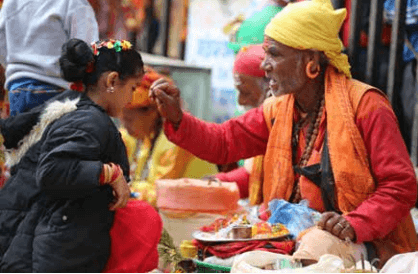Colorful festivals enrich life
Holi
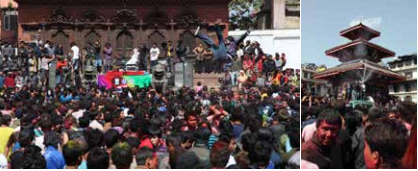
Also known as Fagu Purnima, Holi is the festival of colours. People in Hilly and Terai region of the country celebrate this festival in the month of March every year. They throw water and colored powders at each other, sing, dance and eat delicious food as a part of celebration.
The festival starts with the installation of a chir (bamboo pole) decorated with pieces of colourful cloths, at Hanumandhoka Durbar Square, a UNESCO heritage site in Kathmandu. At the end of Holi, the pole is burned down. The pole is erected a week earlier than the main day of Holi.
On the day of Holi, people of all ages come together to throw colored powders into the air, splash water and put colors on each other’s face. The festival marks the victory of good over evil. It is regarded as one of the most vibrant and joyous festivals of Hindu people. However, it is celebrated in all religious communities in Nepal.
The colours used in the Holi carry different religious meanings. For example, red symbolizes love and green signifies new beginning. Holi is in fact celebrated as a way to welcome the new beginning i.e. the arrival of spring season. It is also celebrated in India.
Teej
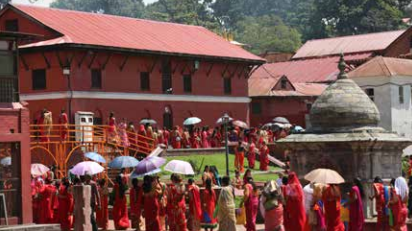
Teej is a festival observed by Hindu women and girls. It is a threeday festival where women fast and worship Lord Shiva and his wife, Goddess Parvati. It is believed that fasting and worshipping those deities will bring wellness, prosperity and happiness in their marital life.
In the first day of Teej, women visit their maternal home and celebrate the day with traditional singing and dancing. They participate in a long fest known as ‘dar’ in which they eat delicacies that consists of porridge, sel roti, fruits, etc. The following day, they observe Nirjala brata, which means they don’t eat and even drink water for whole 24 hours.
The third day is known as ‘Rishi Panchami’. Women break their fast, bathe and worship Rishi (ancient saints). In Kathmandu, the capital city of the country, thousands of women go to Pasupatinath Temple to offer prayers. Throughout this festival women dress themselves up in red sarees and wear bangles, red tika and other jewelries Though Teej is usally considered to be the festival of married women, men have also started taking part in it these days. They come together to sing and dance and some husbands have began to fast for the longevity and wellness of their wives.
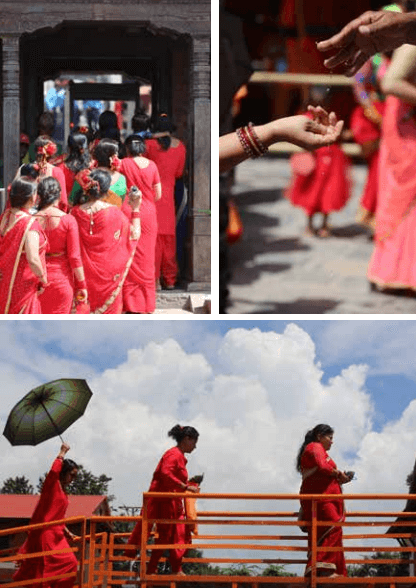
Father’s Day
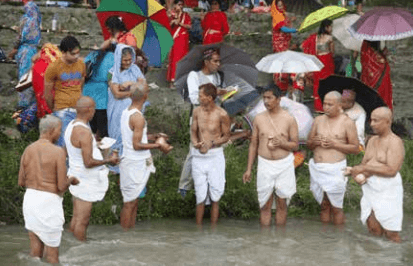
Nepalis celebrate Father’s Day on the no-moon day of the lunar dark fortnight, August/September every year. This festival is also known as Kushe Aunsi, Gokarne Aunsi or Pitri Tarpani Aunsi. Auni is no-moon day. This day, Nepali people offer various gifts, foods and clothing to their father and take blessings from them.
Those who have lost their father visit Lord Shiva’s temples to perform ‘shradhha’ in the memory of their deceased fathers. Many people go to Gokarneswor Mahadev temple in Gokarna, a suburb of Kathmandu to perform those rituals. Thus, the temple is seen flooded with people on this auspicious day.
Father is considered to be a teacher and protector in Nepal. Therefore, Nepalis celebrate father’s day to pay respect to their father for his care and love to family. In Nepali language the day is known as ‘Buwa ko Mukh Herne Din’ which literally means ‘looking at father’s face.’
During this day, people also bring Kush, a holy grass in their home with the belief that keeping that grass brings happiness in their family. Kush brought home this day is used throughout the year in several traditional functions. The date of Nepali father’s day does not match with international father’s day.
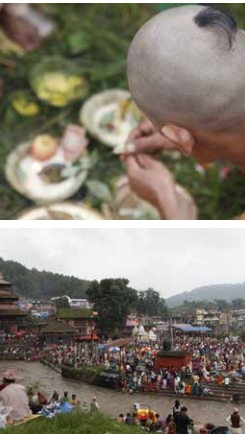
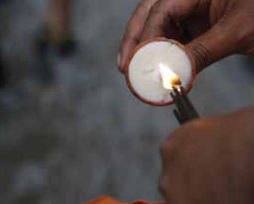
Madhav Narayan Festival
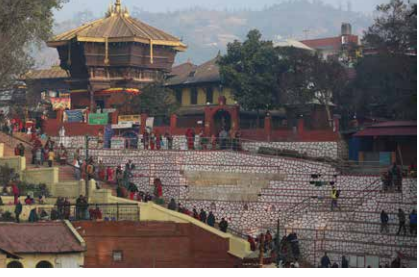
A month long Shree Madhav Naryan festival is dedicated to God Madhav Narayan and Goddess Swathani. Both men and women undertake fasting and they worship deities throughout the month. The devotees march towards different shrines and offer holy water to different deities on different days.
People take ritual bathing while observing the festival. They dive in the holy pond and chant mantras. This festival is also known as Swasthani Purnima. The devotees read a holy book called ‘Swathani Brata Katha’ all over the month. The book consists the tale of Goddess Swathani and Madhav Naryan (Lord Shiva).
Devotees taking part in the fast eat only once a day and they do not eat food that contains salt. On the final day, the devotees roll down on the ground, wrapping white clothes in their body to take a holy bath in Hanumante River in Bhaktapur, an outskirt of Kathmandu. Female devotees wear red sarees.
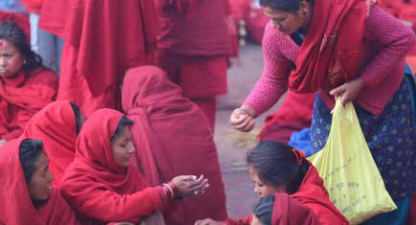
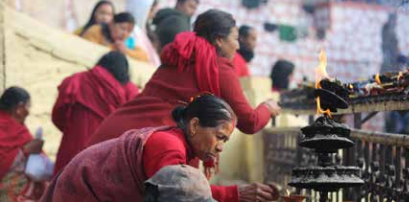
Dashain
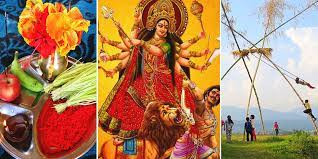
This is the grandest and biggest festival of Nepalis. The cultural and religious festival, commonly known as Bijaya Dashami, is celebrated by all Nepalis across the country and abroad. Dashain represents the victory of good over evil. It is the festival of family reunions, exchange of blessings and long, elaborative worshipping of Goddess Durga.
Dashain begins with Ghatasthapana, the first day of nine-night festival. On this day the Kalash (vase) is filled with holy water and is placed for worshiping for rest of the days. A pot is established in which the seeds of barley, wheat, maize, rice, etc. are sown. In the tenth day, a sprouted seedling called Jamara grown in the pot are offered with tika to all the members of the house and to their relatives. The eldest member puts tika and gives blessings to all juniors.
Thousands of goats, sheep and buffaloes are sacrificed during Dashain. Great feasts are held in every home where large amount of meat are consumed. Dashain is celebrated for ten days. People purchase new clothes, clean and decorate their houses. They worship every day and visit different temples and shrines.
